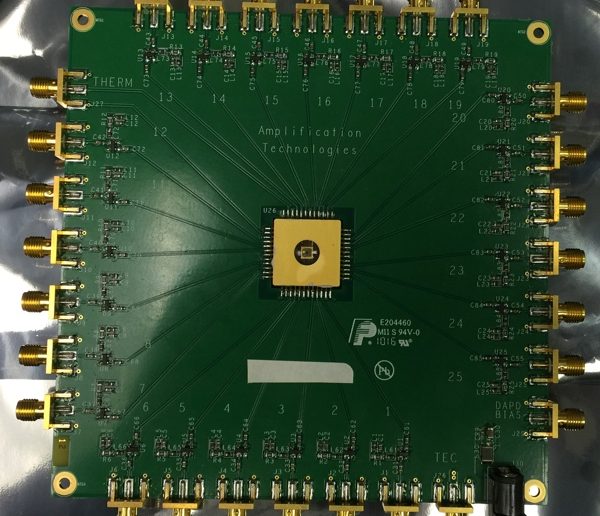In April of this year, Amplification Technologies announced the release of a new family of Geiger-mode LiDAR sensor arrays. They tout the technology as being ideal for real-time 3D imaging of moving objects. The arrays are built for use in autonomous vehicles, UAVs, and a bunch of other applications.
How does Amplification Technologies’ family of sensor arrays differ from other geiger-mode arrays on the market? I caught up with Dr. Rafael Ben-Michael, Amplification Technologies’ CTO, for more.
The first thing Dr. Ben-Michael explained is that the idea for the product is to use it as an OEM in a complete LiDAR system—this means they’ll supply the sensor array to manufacturers of full LiDAR systems.
The next part is a little technical: The sensor is what they call a Discrete-Amplification Photon Detector. This means it is integrated with a negative feedback mechanism to make the sensor much more sensitive. This setup provides several operational benefits.
First, the setup allows the company to make the electronics simpler. That means lower cost, weight, and size for the sensor. It means the sensor can also operate at room temperature, where most Geiger-mode sensors require some level of cooling. This frees up space, weight, and power generally taken up by cooling systems, making it possible to incorporate the system where a full Geiger-mode setup wouldn’t work before.
Next, the array doesn’t have dead time. “Most Geiger-mode sensors have a time after detection where they cannot detect any light,” Dr. Ben-Michael says. “Our sensor is always on and always responsive to light.” This leads to a higher speed of operation, and better signal to noise ratio for applications like UAVs and autonomous vehicles, which require real-time data.

A circuit board for the array.
Higher signal to noise ratio, Dr. Ben-Michael tells me, means the sensors based on their array will be able to “see farther and make out objects under difficult conditions such as snow, fog, and heavy rain.”
“This is the fundamental issue in the field,” he says, “Will one have enough information to create a real-time 3D map of all objects surrounding a vehicle?
The next benefit is that the array will output different kinds of pulses depending on how many photons it receives. If it receives one photon, it will produce a pulse height of 4mV. If it receives 10 photons, it will produce a pulse height of 40mV. This response is proportional all the way up to “a few thousand photons per pulse.”
Other geiger-mode sensors will produce what Dr. Ben-Michael calls a “photon event.” It indicates whether it has received photons or not—two levels—but nothing more granular.
The Amplified Technologies sensor, on the other hand, detects “gray levels” in between. That makes it helpful for determining what objects are detected by the sensor. “For example, it would be easier to discern higher light-reflecting materials such as metals from organic objects,” he says.
In other words, the array is small, always on, and provides more nuanced sensing data. It has been developed for the exacting needs autonomous vehicle and UAV applications, and it might just do the trick.






